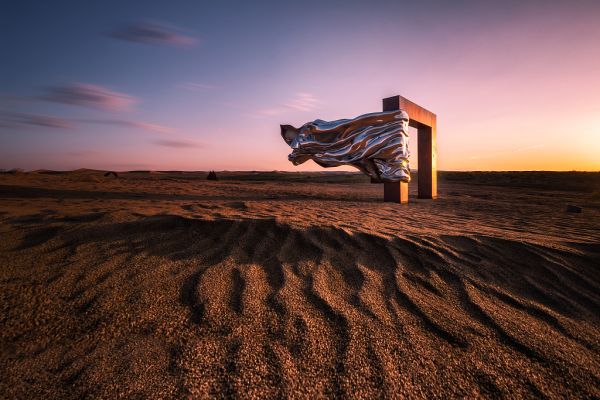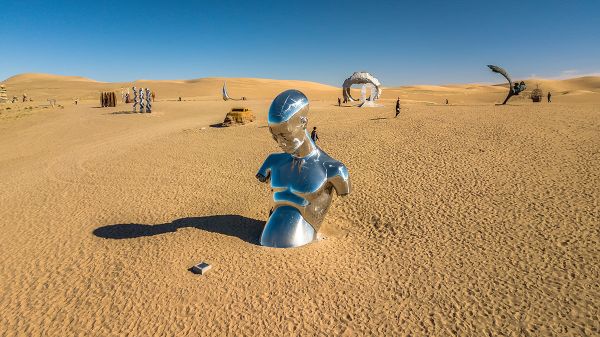Scattered in a vast desert in northwest China, 102 pieces of sculptures, created by artisans from home and abroad, have been drawing large crowds to the Suwu Desert Scenic Area, making it a new travel hot spot during the holiday. The natural museum also serves as a platform to promote the concepts about green life and environmental protection, as well as the harmonious coexistence of human and nature. Covering an area of about 700,000 square meters, the immense desert museum has a total investment outlay of about 120 million yuan (nearly $17.7 million). It aims to boost the integrated and sustainable development of the local cultural tourism industry.

“It is the first time that I have been to this desert sculpture museum. The desert is magnificent and spectacular. I have seen every sculpture here and each sculpture contains rich connotations, which are quite inspiring. It is amazing to be here,” said a tourist Zhang Jiarui.

Situated on the ancient Silk Road, Minqin is a hinterland oasis between the Tengger and Badain Jaran deserts. Thanks to the annual event, it has become a popular destination for tourists to see sculptures permanently located in the dramatic setting of the Suwu desert. Home to the largest desert reservoir in Asia, the 16,000-square-kilometre county, more than 10 times the size of London City, plays a crucial role in local ecological restoration. It shows generations of efforts of carrying forward the tradition of desert prevention and control.The county first held several international desert sculpture creation camps and invited domestic and foreign artists to unleash their talents and creativity, and then built China’s first desert sculpture museum to showcase the creations. Some sculptures permanently on display in the dramatic setting of the Suwu desert, Minqin County, Wuwei City, northeast China’s Gansu Province.

